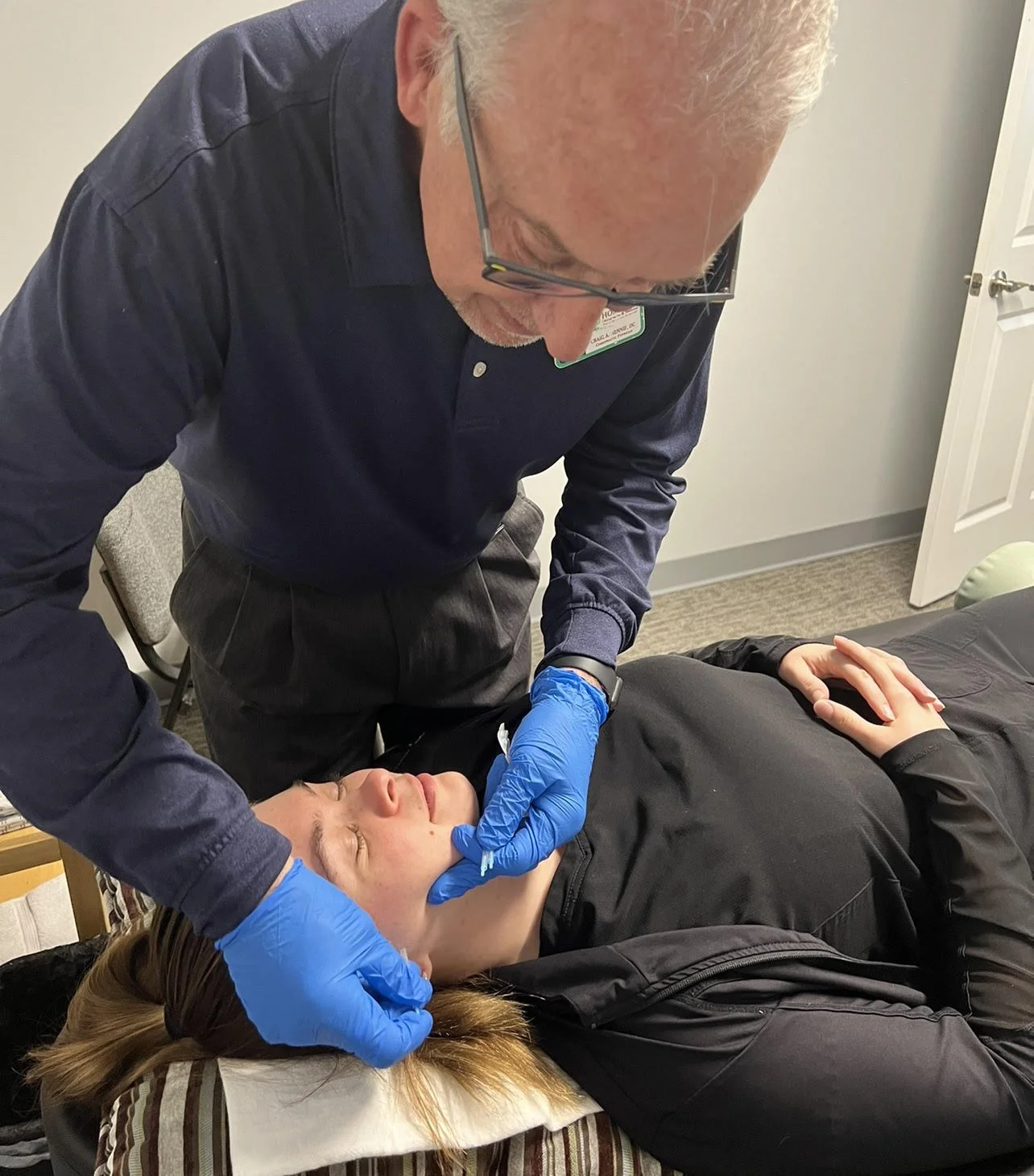
Dry Needling
Dry Needling treatment is specifically focused on conditions requiring muscular pain relief and tension.
Inspired by ancient Chinese acupuncture, the purpose of dry needling is much more focused and restricted to a specific treatment area. Developed as far back as the 1940’s the practice and benefits of dry needling have been honed and refined, becoming a well-known muscular pain relief treatment often used in conjunction with chiropractic care.
The term “dry” needling means there is no fluid injected into the body by these needles. Needles are inserted into or around these knots, also called “trigger points". Many tight, sore, overused, overworked, and injured muscular tissues develop tight knots or “adhesions.” Dry needling directly deals with trigger points within the muscle and fascia tissues. These knots cause pain and can diminish your range of motion and lead to muscle spasms and referred pain that radiates out from that knot or adhesion. Skilled dry needling can help the tight knots to release their tension and relax. When applied as a complementary therapy with your chiropractic care with our practice, it can help patients return to a much more active, pain-free lifestyle.
Not only does dry needling help with muscular pain relief and improve range of motion, but it has also helped patients with conditions including:
Back Pain
Neck Pain
Shoulder Pain
Elbow Pain
TMJ (jaw and facial pain)
Knee
Foot pain (particularly plantar fasciitis)
Hand and wrist pain (carpal tunnel syndrome)
What to expect during treatment:
During a dry needling session, Dr. Hennie will insert sterile, short, and extremely thin, stainless steel “filiform” needles into the skin, either directly into the muscle knots or around the muscle knots at strategic points, to release the tightness. Dr. Hennie has pursued extensive training in dry needling in order to provide his patients with this additional treatment service.
Does Dry Needling Hurt?
Most patients report feeling the gentle insertion of the needles, but this does not cause much (if any) pain. Many patients report a welcome release of tension at the trigger point site to which the needles are applied. Minor bruising has been reported on occasion, but usually resolves within a few days.

